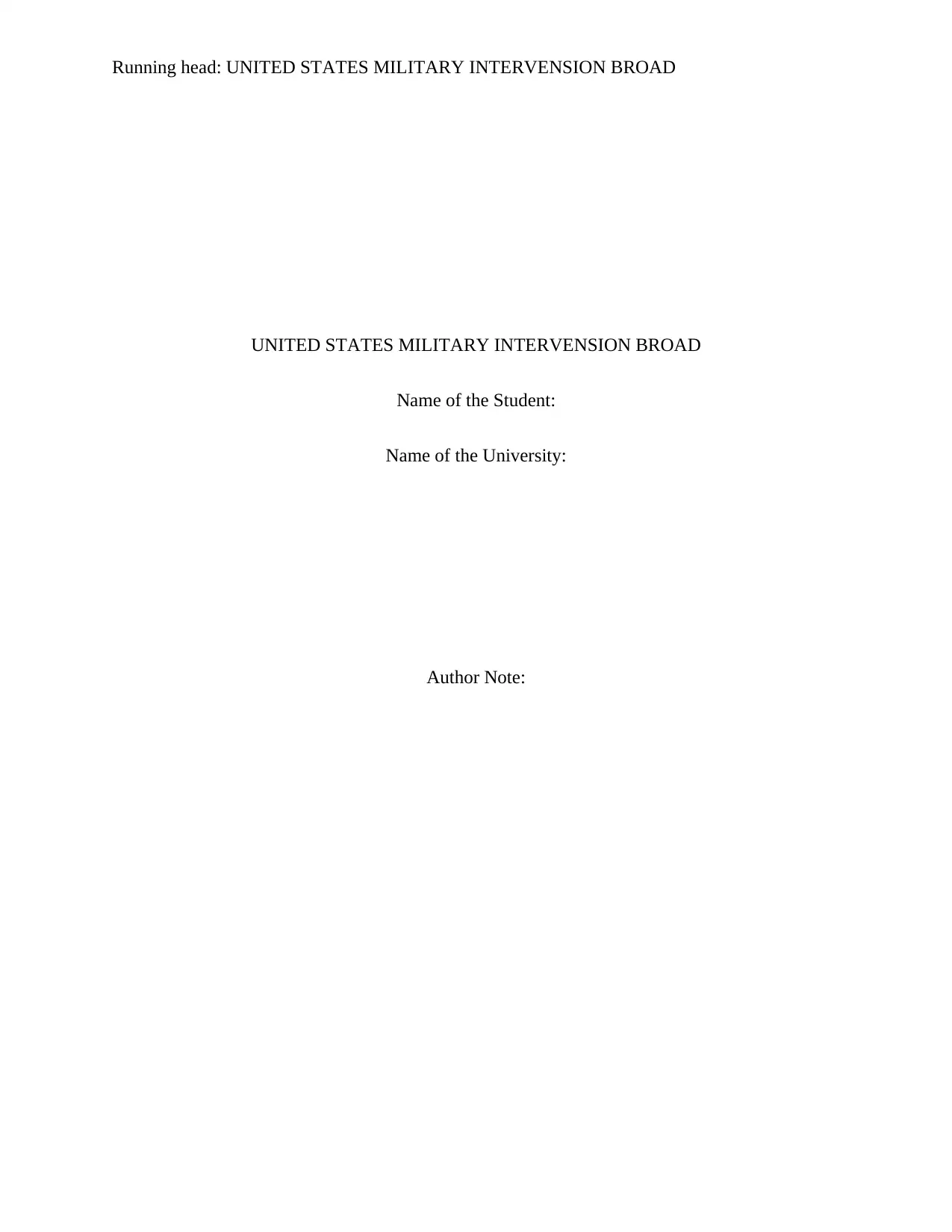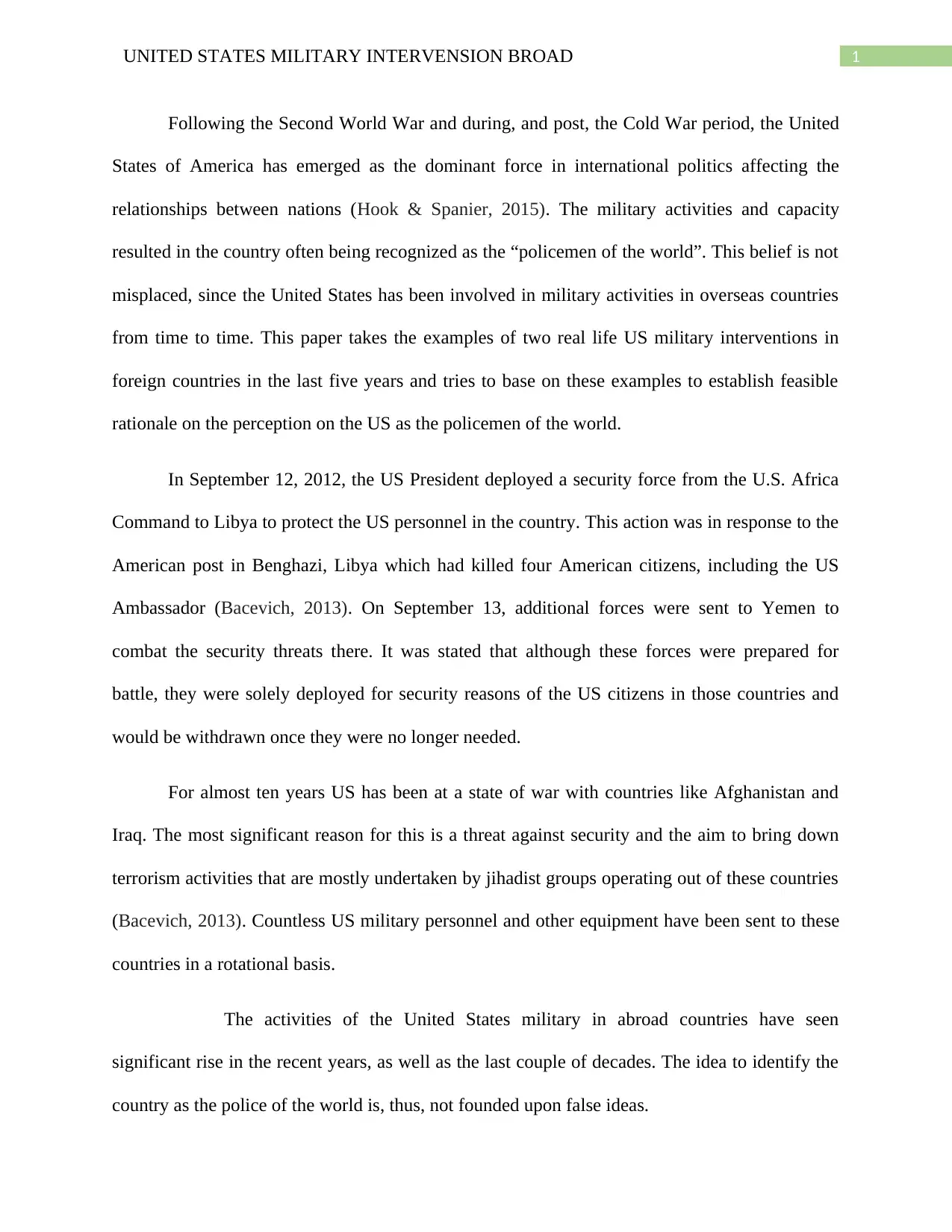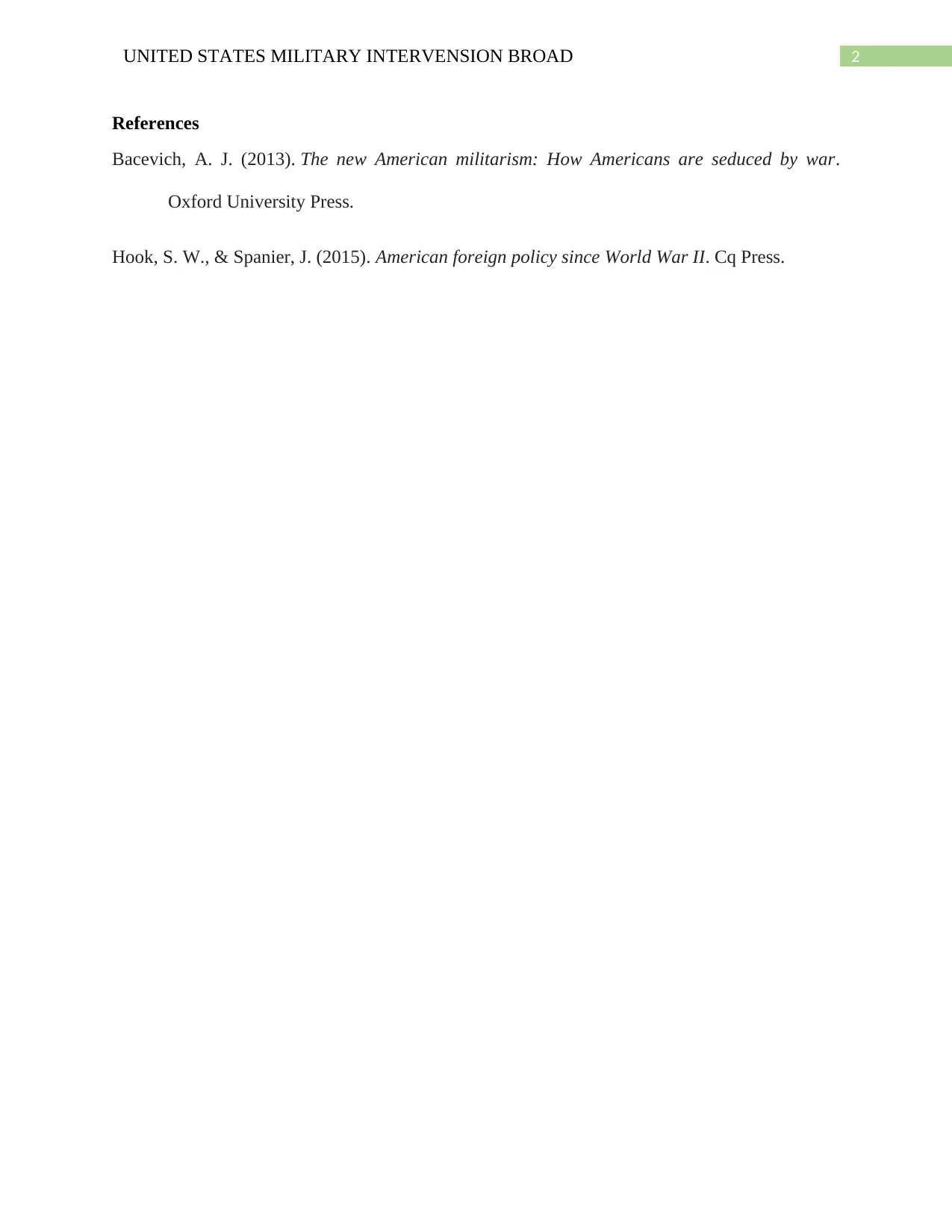United States Military Intervention: Case Studies and Analysis
VerifiedAdded on 2020/04/15
|3
|458
|32
Report
AI Summary
This report examines the United States' military interventions in foreign countries, focusing on the period after World War II. The report highlights the US's role as a dominant force in international politics and its frequent involvement in military actions overseas, often leading to its portrayal as the "policeman of the world." It uses case studies, including interventions in Libya and Yemen, to illustrate the rationale behind these actions and the US's response to security threats. The report also references the prolonged conflicts in Afghanistan and Iraq, emphasizing the US's efforts to combat terrorism. The author uses references to support the argument. This report provides valuable insights into American foreign policy and the global impact of US military activities.
1 out of 3










![[object Object]](/_next/static/media/star-bottom.7253800d.svg)